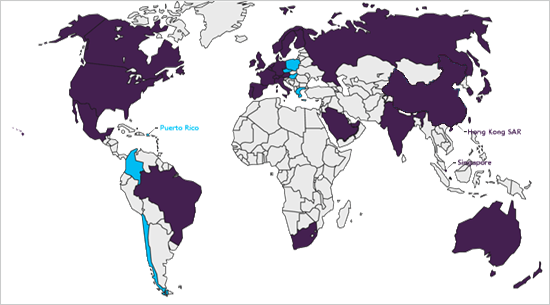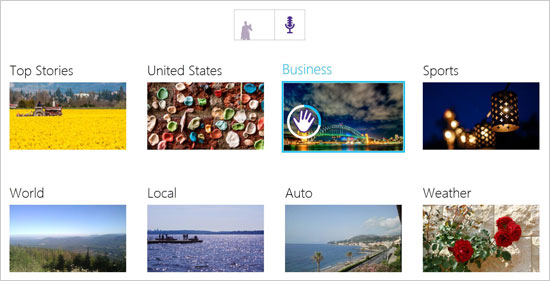Kinect for Windows releases SDK update and launches in China
I’m very pleased to announce that the latest Kinect for Windows runtime and software development kit (SDK) have been released today. I am also thrilled to announce that the Kinect for Windows sensor is now available in China.
Developers and business leaders around the world are just beginning to realize what’s possible when the natural user interface capabilities of Kinect are made available for commercial use in Windows environments. I look forward to seeing the innovative things Chinese companies do with this voice and gesture technology, as well as the business and societal problems they are able to solve with it.

The updated SDK gives developers more powerful sensor data tools and better ease of use, while offering businesses the ability to deploy in more places. The updated SDK includes:
Extended sensor data access
- Data from the sensor's 3-axis accelerometer is now exposed in the API. This enables detection of the sensor's orientation.
- Extended-range depth data now provides details beyond 4 meters. Extended-range depth data is data beyond the tested and certified ranges and is therefore lower accuracy. For those developers who want access to this data, it’s now available.
- Color camera settings, such as brightness and exposure, can now be set explicitly by the application, allowing developers to tune a Kinect for Windows sensor’s environment.
- The infrared stream is now exposed in the API. This means developers can use the infrared stream in many scenarios, such as calibrating other color cameras to the depth sensor or capturing grayscale images in low-light situations.
- The updated SDK used with the Kinect for Windows sensors allows for faster toggling of IR to support multiple overlapping sensors.
Access to all this data means new experiences are possible: Whole new scenarios open up, such as monitoring manufacturing processes with extended-range depth data. Building solutions that work in low-light settings becomes a reality with IR stream exposure, such as in theaters and light-controlled museums. And developers can tailor applications to work in different environments with the numerous color camera settings, which enhance an application’s ability to work perfectly for end users.
One of the new samples released demonstrates a best-in-class UI based on the Kinect for Windows
Human Interface Guidelines called the Basic Interactions – WPF sample.
Improved developer tools
- Kinect Studio has been updated to support all new sensor data features.
- The SDK ships with a German speech recognition language pack that has been optimized for the sensor's microphone array.
- Skeletal tracking is now supported on multiple sensors within a single application.
- New samples show how to use all the new SDK features. Additionally, a fantastic new sample has been released that demonstrates a best-in-class UI based on the Kinect for Windows Human Interface Guidelines called the Basic Interactions – WPF sample.
We are committed to continuing to make it easier and easier for developers to create amazing applications. That’s why we continue to invest in tools and resources like these. We want to do the heavy lifting behind the scenes so the technologists using our platform can focus on making their specific solutions great. For instance, people have been using our Human Interface Guidelines (HIG) to design more natural, intuitive interactions since we released last May. Now, the Basic Interactions sample brings to life the best practices that we described in the HIG and can be easily repurposed.
Greater support for operating systems
- Windows 8 compatibility. By using the updated Kinect for Windows SDK, you can develop a Kinect for Windows solution for Windows 8 desktop applications.
- The latest SDK supports development with Visual Studio 2012 and the new Microsoft .NET Framework 4.5.
- The Kinect for Windows sensor now works on Windows running in a virtual machine (VM) and has been tested with the following VM environments: Microsoft Hyper-V, VMWare, and Parallels.
Windows 8 compatibility and VM support now mean Kinect for Windows can be in more places, on more devices. We want our business customers to be able to build and deploy their solutions where they want, using the latest tools, operating systems, and programming languages available today.
This updated version of the SDK is fully compatible with previous commercial versions, so we recommend that all developers upgrade their applications to get access to the latest improvements and to ensure that Windows 8 deployments have a fully tested and supported experience.
As I mentioned in my previous blog post, over the next few months we will be making Kinect for Windows sensors available in seven more markets: Chile, Colombia, the Czech Republic, Greece, Hungary, Poland, and Puerto Rico. Stay tuned; we’ll bring you more updates on interesting applications and deployments in these and other markets as we learn about them in coming months.
Craig Eisler
General Manager, Kinect for Windows
Key Links
